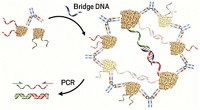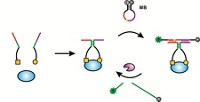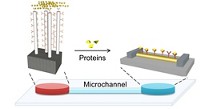Advertisement
Grab your lab coat. Let's get started
Welcome!
Welcome!
Create an account below to get 6 C&EN articles per month, receive newsletters and more - all free.
It seems this is your first time logging in online. Please enter the following information to continue.
As an ACS member you automatically get access to this site. All we need is few more details to create your reading experience.
Not you? Sign in with a different account.
Not you? Sign in with a different account.
ERROR 1
ERROR 1
ERROR 2
ERROR 2
ERROR 2
ERROR 2
ERROR 2
Password and Confirm password must match.
If you have an ACS member number, please enter it here so we can link this account to your membership. (optional)
ERROR 2
ACS values your privacy. By submitting your information, you are gaining access to C&EN and subscribing to our weekly newsletter. We use the information you provide to make your reading experience better, and we will never sell your data to third party members.
Analytical Chemistry
Protein Detection In A Snap
Microassays: A device called a snap chip eases mixing solutions in chip-based microassays
by Erika Gebel
May 2, 2012

Analytical tests that use tiny sample volumes allow researchers to detect many types of molecules on a single chip. But manipulating these minuscule volumes isn’t easy or cheap. Researchers have now developed a simple solution: an inexpensive device called a snap chip that aligns and mates two chips to mix test components (Anal. Chem., DOI: 10.1021/ac3003177).
So-called sandwich assays can detect rare proteins in complex samples, like blood. In the tests, one antibody grabs the target protein from the sample and concentrates it on a spot on a chip. A second antibody then binds another part of the protein and produces a signal, usually fluorescence, to indicate how much protein is present.
Unfortunately, applying several detection antibodies to a chip at once can lead to false positives, says David Juncker of McGill University, because the proteins can pair up with the wrong antibody. Adding individual antibodies to each assay spot avoids that concern, but requires expensive equipment. So Juncker and his team came up with an alternative approach.
For each protein they wanted to look for, the researchers applied dots of the antibody that captures that protein on a nitrocellulose slide. On another slide, they made similar dots of the matching detection antibodies. The scientists thought that they could produce a large number of these slides and store them for future use, avoiding the need to mix and spot the antibodies every time they wanted to run the assay.
To test the snap chip, the team applied 10 target proteins in a buffer that was 10% human blood serum to the nitrocellulose slide. The scientists then loaded the slides into the snap chip, which looks like a small vise grip, to press the slides together, mixing the antibody pairs. Fluorescent tags on the detection antibodies revealed that the snap chip successfully made the sandwiches. The researchers could detect the target proteins down to concentrations of picograms per milliliter, which is comparable to previous sandwich assays.





Join the conversation
Contact the reporter
Submit a Letter to the Editor for publication
Engage with us on Twitter